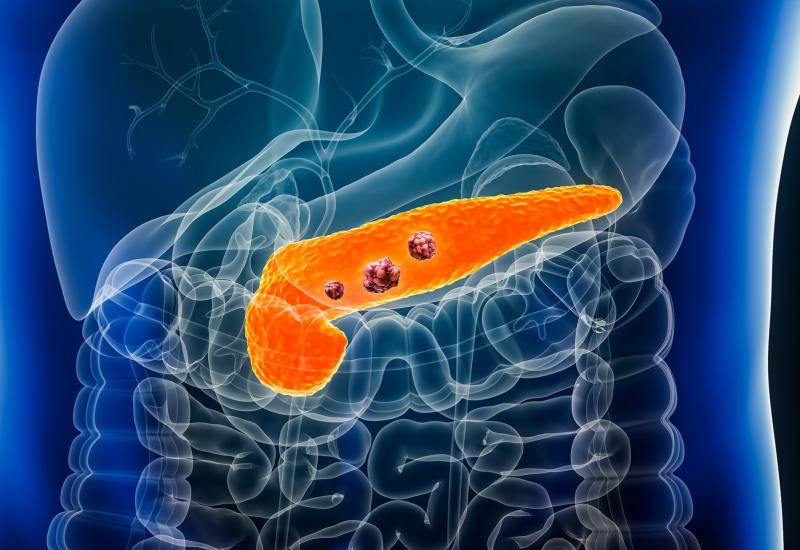
More ROR1s enter the clinic
The conjugates SYS6005 and TQB2101 feature among first-in-human study entrants.
The conjugates SYS6005 and TQB2101 feature among first-in-human study entrants.

ROR1 blockade is fraught with risk, but it nevertheless continues to deliver low-key licensing deals, and the subject of one of these, CSPC Pharmaceutical's ROR1-directed antibody-drug conjugate SYS6005, has just entered its first clinical study.
This has been revealed in new listings entered on the clinicaltrials.gov registry, which include a study of SYS6005, as well as that of another new anti-ROR1 ADC, Chia Tai's TQB2101. Other notable phase 1 entrants include a new degrader approach from Mitsubishi Tanabe, an anti-SSTR2 radioconjugate to rival Lutathera, and a project against a target just ditched by Takeda.
The latest sign of licensing activity in ROR1 is a deal announced on Tuesday under which Taiwan's Formosa Pharmaceuticals picked up global rights to ALM-401 from Almac Discovery. ALM-401 is a bispecific ADC against ROR1 as well as EGFR, though Almac has separately worked on now discontinued monospecific anti-ROR1 ADCs including ADP-c389.
Since the terms of the deal weren't disclosed, mirroring other recent ROR1-focused transactions such as Ipsen picking up rights to Sutro's STRO-003, they can be assumed to be relatively minor. CSPC licensed SYS6005 to the private US biotech Radiance Biopharma in February for just $15m up front; CSPC is running the newly listed study, and for now Radiance isn't sponsoring any ex-China trials.
Chia Tai Tianqing Pharmaceutical has a growing clinical pipeline of small molecules and biologicals, and the latest addition to this is TQB2101, an anti-ROR1 ADC. While SYS6005 uses an Fc-silenced MAb and MMAE payload, the precise characteristics of TQB2101 haven't been disclosed.
Recently disclosed first-in-human studies*
| Project | Mechanism | Company | Trial | Scheduled start |
|---|---|---|---|---|
| IOV-3001 | IL-2 analogue | Iovance (ex Novartis) | Amtagvi combo in melanoma | 11 Mar 2025 |
| STX-0712 | CCR2 cytotoxicity-targeting chimera | Solu Therapeutics | Chronic myelomonocytic leukaemia & AML | 13 Mar 2025 |
| RB-164/ SYS6005 | ROR1 ADC | CSPC/ Radiance | Haematological cancers | 3 Apr 2025 |
| Super1 | NY-ESO-1 T-cell receptor | FineImmune | NY-ESO-1+ve solid tumours (HLA A*02) | 23 Apr 2025 |
| SSS59 | MUC17 x CD28 T-cell engager | 3SBio | Unspecified | 27 Apr 2025 |
| TQB2101 | ROR1 ADC | Chia Tai Tianqing | Unspecified | Apr 2025 |
| 225Ac-Satoreotide tetraxetan | SSTR2 radioconjugate | Ariceum | SSTR2+ve SCLC & Merkel cell carcinoma | Apr 2025 |
| MT-4561 | BRD4 degrader | Mitsubishi Tanabe | Solid tumours | Apr 2025 |
Note: *projects newly listed on the clinicaltrials.gov database between 22 Apr and 6 May 2025.
Meanwhile, just days ago Takeda revealed a further cull of its oncology pipeline, including the discontinuation of the anti-CCR2 Sting agonist-based conjugate plozalizumab plevistinag.
But the approach lives on, with Solu Therapeutics putting STX-0712 into human studies. Solu, a private US biotech that closed a $41m series A financing round in April, calls STX-0712 an anti-CCR2 "cytotoxicity-targeting chimaera"; this heterobifunctional small molecule binds to CCR2 on tumour cells, and exerts its activity after the addition of a proprietary MAb, to which it also binds.
Mitsubishi Tanabe, a Japanese group that in February was bought out for $3.3bn by a private equity consortium, is new into clinical trials with MT-4561, a degrader of BRD4. Targeted degradation has a patchy track record, and OncologyPipeline reveals just two other industry-owned anti-BRD4 degraders, one of which, Ranok's RNK05047, is in a phase 1/2 trial.
Elsewhere, Ariceum has taken into human trials an anti-SSRT2 radioconjugate, a similar approach to Novartis's Lutathera, except that it uses actinium-225 as the radioisotope rather than Lutathera's lutetium-177. And Iovance, the only company to succeed in bringing a TIL therapy (Amtagvi) to market, is now seeking to combine this with an IL-2 analogue coded IOV-3001.
Amtagvi was delayed for years, and is now proving cumbersome to sell, causing Iovance's share price to crash; IOV-3001 is meant to optimise the TIL treatment regimen, and Iovance licensed it from Novartis for an undisclosed sum in 2020.
This story has been updated.
1444













